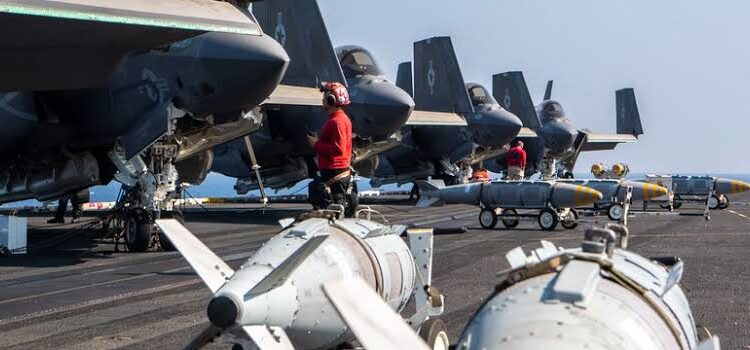US estimates not comprehensive: Washington has burned $10 billion against Yemen since October 2023
Coinciding with the completion of two full years since the Al-Aqsa flood, the “Costs of War” project at Brown University’s Watson Institute of Public Affairs published its estimates on Tuesday for the costs of military operations carried out by the US of America against the Yemeni support front for Gaza from October 2024 until last September (Fiscal Year 2025), revealing total costs approximating $10 billion since October 2023, without accounting for many direct and indirect losses.
Follow-ups – Al-Khabar Al-Yemeni:
Fiscal Year 2025 Costs:
According to a report published by the project, “The largest expenses for American taxpayers in Fiscal Year 2025 were associated with military actions taken against the Houthis, whether directly or as part of US efforts to protect shipping.”
The details of these expenses, according to the project, were as follows:
* Ground transport of Patriot systems: $10 million.
* Air transport of a Patriot system via 73 (C-17 aircrafts): between $39.4 million and $95.1 million.
* (C-17 aircrafts) depreciation: between $3.9 million and $8.9 million.
* Operation of an aircraft carrier for 9 months: over $2.7 billion as a higher estimate, considering daily costs of $9.05 million.
* Operation of a second aircraft carrier for 60 days: over $1.6 billion as a higher estimate.
* Bombs: between $85 million and $127.5 million.
* (Tomahawk) missiles: 75 missiles with a total value ranging between $112.5 million and $142.5 million.
* (AGM-150) bombs: 20 bombs with a total cost of $30 million.
* Loss of three (F/A-18) fighter jets: $210 million.
According to the report, the total cost of US operations against Yemen from October 2024 to September ranges between $2.76 billion as a lower estimate and $4.945 billion as a higher estimate.
Non-Comprehensive Estimates:
The American report clarified that “the full cost could be higher if more of the mentioned elements were used or purchased at higher prices,” noting that “two full air missile defense battalions were transferred from the Indo-Pacific Theater to the US Central Command Theater, and the movements required 73 flights of cargo aircraft (C-17) to transport each battalion.”
It stated that “in Fiscal Year 2025, the Houthi efforts absorbed a significant portion of the global capacity of US aircraft carriers, and by June 18, 2025, analysts estimated that the US Central Command area accounted for 41% of all carrier “sail days” (up from 8% the previous year), with multiple groups of aircraft carriers rotating or overlapping to support Red Sea and Middle East missions,” pointing out that “there are a number of additional long-term costs that the United States likely incurs as a result of these activities, which are excluded from the total figure in this report.”
It added that: “The prolonged presence of the strike carrier group in US Central Command over the past year has costs at the budget and readiness levels that are not quantified in this report. These costs include extended deployments, deferred maintenance, servicing hundreds of aircraft and vehicles on the strike carrier groups, and displacing or delaying global commitments for these carriers.”
The report considered the loss of three (F-18) fighter jets “a rare occurrence.”
It stated that “the costs reveal the inconsistency of US military responses to inexpensive weapons. Operation ‘Rough Rider’ served as a wake-up call in terms of how to overcome the US in terms of cost ratio. General Eric Corella testified that the American army was able to intercept only 40% of the Houthi drones with low-cost precision missiles, while the remainder required expensive munitions.” It called for the US to “expand its investments in directed energy technologies and drones.” It is likely that “the Pentagon will need not only to replace munitions but also to invest in research, development, and procurement to develop these next-generation technologies.”
It is evident that the estimates of the “Costs of War” project did not address the US Navy’s losses of (MQ-9) drones shot down by the Yemeni Armed Forces. Nor did they address the operating costs of the (B-2) stealth bombers used in the Trump administration’s campaign against Yemen, let alone the costs of the extremely high-cost defensive missiles, of which the US used dozens, which constituted a decisive factor in the high losses of the campaign against Yemen.

